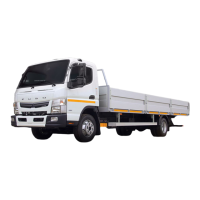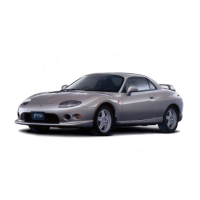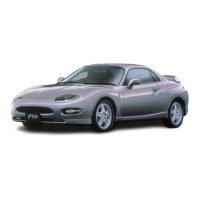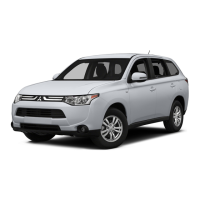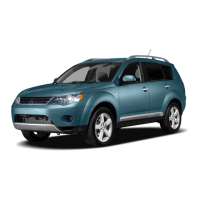12-62 Simple inspection and service
The amount of wear on a tire depends on its posi-
tion on the vehicle. To equalize wear and extend life
as much as possible, rotate the tires at regular inter-
vals.
• Use a tire of the same type on a single axle. If
different type tires are mounted on an axle, the
vehicle tends to pull to one side during braking,
and could cause you to lose directional control
of the vehicle.
• Applicable tires are as follows.
CAUTION
• Break in new tires by driving 200 km (125
miles) or more at 60 km/h (37 mph) or less.
After this run-in period, check tire pressure.
• If using different tread patterns on the front
and rear wheels, select tires with a ribbed
tread for the front wheels and tires with a
traction-type tread for the rear wheels.
Tire rotation
Tire rotation intervals
Every 10,000 km
(6,000 miles)
Model Tire size
FE84
LT215/85R16-10PR
(Load Range E)
FE85
215/75R17.5 124/123L
(Load Range F)
FG
LT235/85R16-10PR
(Load Range E)
WARNING
• Be sure to use the specified type of tires.
Mixing bias and radial tires results in poor
steering and should be avoided at all cost.
• As the vehicle is driven after a wheel has
been replaced, the wheel nuts loosen up
somewhat during the early stages of driv-
ing due to “wear-in”. Therefore, it is neces-
sary to retighten the wheel nuts to the
specified torque after driving 50 to 100 km
(30 to 60 miles). Thereafter, retighten the
nuts at regular intervals.
Z12089
Same tread pattern on all tires
Front Rear
Z12090
Different tread patterns on front and rear tires
Front Rear
FEFG.book Page 62 Thursday, March 10, 2005 7:30 PM

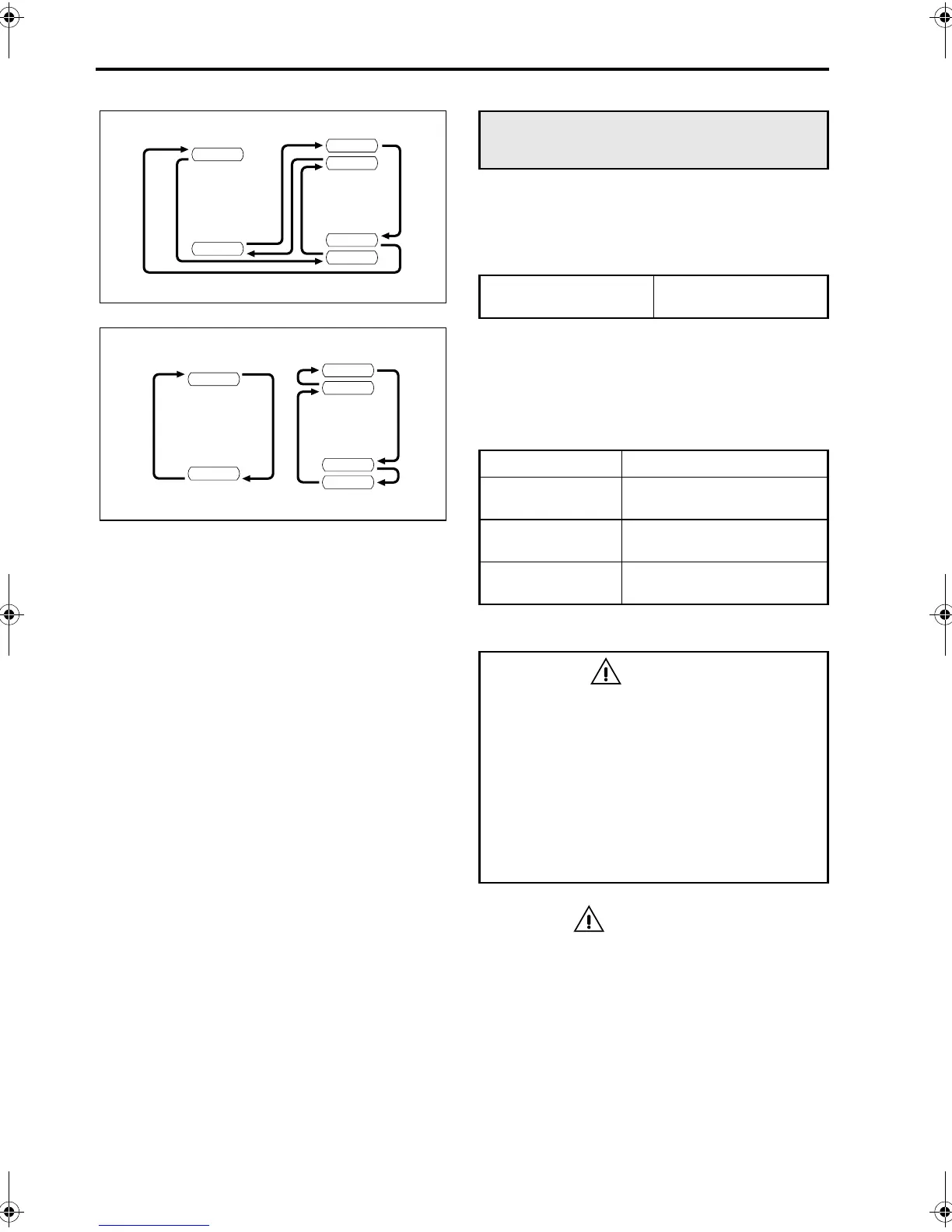